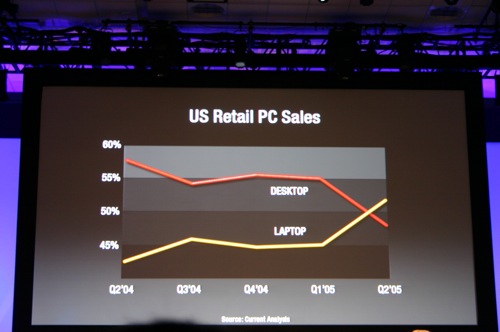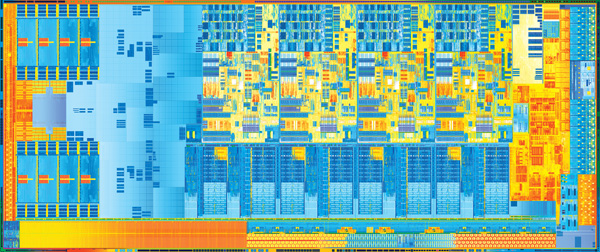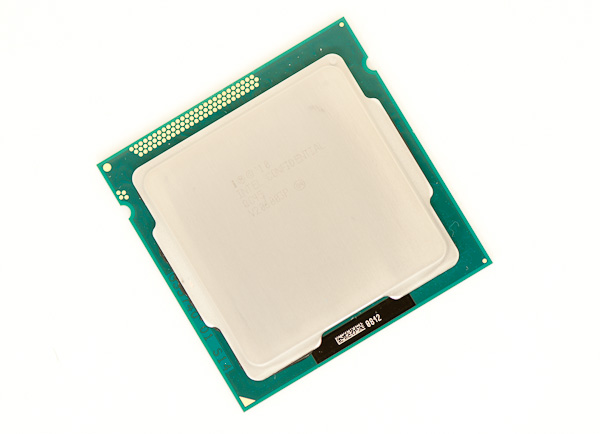The Intel Ivy Bridge (Core i7 3770K) Review
by Anand Lal Shimpi & Ryan Smith on April 23, 2012 12:03 PM EST- Posted in
- CPUs
- Intel
- Ivy Bridge
The times, they are changing. In fact, the times have already changed, we're just waiting for the results. I remember the first time Intel brought me into a hotel room to show me their answer to AMD's Athlon 64 FX—the Pentium 4 Extreme Edition. Back then the desktop race was hotly contested. Pushing the absolute limits of what could be done without a concern for power consumption was the name of the game. In the mid-2000s, the notebook started to take over. Just like the famous day when Apple announced that it was no longer a manufacturer of personal computers but a manufacturer of mobile devices, Intel came to a similar realization years prior when these slides were first shown at an IDF in 2005:
IDF 2005
IDF 2005
Intel is preparing for another major transition, similar to the one it brought to light seven years ago. The move will once again be motivated by mobility, and the transition will be away from the giant CPUs that currently power high-end desktops and notebooks to lower power, more integrated SoCs that find their way into tablets and smartphones. Intel won't leave the high-end market behind, but the trend towards mobility didn't stop with notebooks.
The fact of the matter is that everything Charlie has said on the big H is correct. Haswell will be a significant step forward in graphics performance over Ivy Bridge, and will likely mark Intel's biggest generational leap in GPU technology of all time. Internally Haswell is viewed as the solution to the ARM problem. Build a chip that can deliver extremely low idle power, to the point where you can't tell the difference between an ARM tablet running in standby and one with a Haswell inside. At the same time, give it the performance we've come to expect from Intel. Haswell is the future, and this is the bridge to take us there.
In our Ivy Bridge preview I applauded Intel for executing so well over the past few years. By limiting major architectural shifts to known process technologies, and keeping design simple when transitioning to a new manufacturing process, Intel took what once was a five year design cycle for microprocessor architectures and condensed it into two. Sure the nature of the changes every 2 years was simpler than what we used to see every 5, but like most things in life—smaller but frequent progress often works better than putting big changes off for a long time.
It's Intel's tick-tock philosophy that kept it from having a Bulldozer, and the lack of such structure that left AMD in the situation it is today (on the CPU side at least). Ironically what we saw happen between AMD and Intel over the past ten years is really just a matter of the same mistake being made by both companies, just at different times. Intel's complacency and lack of an aggressive execution model led to AMD's ability to outshine it in the late K7/K8 days. AMD's similar lack of an execution model and executive complacency allowed the tides to turn once more.
Ivy Bridge is a tick+, as we've already established. Intel took a design risk and went for greater performance all while transitioning to the most significant process technology it has ever seen. The end result is a reasonable increase in CPU performance (for a tick), a big step in GPU performance, and a decrease in power consumption.
Today is the day that Ivy Bridge gets official. Its name truly embodies its purpose. While Sandy Bridge was a bridge to a new architecture, Ivy connects a different set of things. It's a bridge to 22nm, warming the seat before Haswell arrives. It's a bridge to a new world of notebooks that are significantly thinner and more power efficient than what we have today. It's a means to the next chapter in the evolution of the PC.
Let's get to it.
Additional Reading
Intel's Ivy Bridge Architecture Exposed
Mobile Ivy Bridge Review
Undervolting & Overclocking on Ivy Bridge
Intel's Ivy Bridge: An HTPC Perspective




















173 Comments
View All Comments
bman212121 - Monday, April 23, 2012 - link
Does anyone know which motherboards are going to support VT-d? Is there a specific chipset you'll need to have or will it just be up to the vendor to decide?Thanks,
Bman
Magichands8 - Monday, April 23, 2012 - link
I feel so ambivalent about Intel's current strategy. I admit I really don't understand why laptops are moving ahead so significantly. Why on earth would someone want to buy a laptop to replace a home desktop system? And if they aren't doing that then how can Intel justify a move away from the high performance end of the spectrum? If you really need to do business work away from home AND away from work then I can see the need for the mobility that a laptop can provide but this focus on a gaming-centric platform so that people can one day soon play Crisis on their laptop at traffic stops on the way to work is utterly baffling to me. On the other hand, the process technology and architectural improvements we are seeing are amazing. It just burns me that performance for what I use a desktop for is essentially at a standstill now so that Intel can save this unfathomable laptop crowd a few watts during the occasional vacation. As it stands when I see a review like this at first I'm like "Oh wow!" and then I feel cheated for having waited for Intel's latest and greatest. Ivy Bridge-E and Haswell-E better be mind blowing or I'm going to be completely crestfallen at the direction that Intel is taking.Quantumbytes - Monday, April 23, 2012 - link
Intel is following a strategy that will in the end provide compute power for small and powerfull devices like cell phones, laptops, tablets, RFIDs, food and apparel tags, etc. They are looking at the big picture and the money is in the small designs. Desktops are a means to an end. Get used to the push to small and simple.JarredWalton - Monday, April 23, 2012 - link
Thanks for being an AMD apologist and reading with blinders. Trinity will probably maintain the GPU performance gap. Until Trinity arrives, however, IVB HD 4000 on laptops on average across 15 games is equal to Llano A8 on laptops.And what other things are people doing with graphics besides games? Video transcoding? Okay, there's one task. Name another that computer users do on a regular basis. [Crickets...]
So why is Intel putting so much effort into graphics? Because their business is to sell you a new microprocessor every 2-3 years if they can. With the ability to put 1.4 billion transistors into a 130mm^2 die, what else are they supposed to do? More cache? More CPU cores? You try to make the worst aspect of your product better, and then you market it to the masses. That's all that's really happening here.
frozentundra123456 - Monday, April 23, 2012 - link
Most Llano laptops I have seen are not even the A8 model, but mostly the A6, with somewhat lower graphics capabilities. So I think you are being very fair to AMD in comparing their top of the line graphics to HD4000, instead of the lower performance A6 graphics.André - Monday, April 23, 2012 - link
"Unfortunately at the time only Apple was interested in a hypothetical Ivy Bridge GT3 and rumor has it that Otellini wasn't willing to make a part that only one OEM would buy in large quantities. We will eventually get the GPU that Apple wanted, but it'll be next year, with Haswell GT3. And the GPU that Apple really really wanted? That'll be GT4, with Broadwell in 2014."Can't help but wonder were you got this tidbit from? :-)
Very interesting.
André - Monday, April 23, 2012 - link
D'oh ... spelling.Where you got the tidbit from even.
SC-D_E_A_T_H - Monday, April 23, 2012 - link
I'll be sticking with my AMD Sempron 3400+. A processing badass!DanNeely - Monday, April 23, 2012 - link
"How many enthusiasts who overclock their computers are going to be running them *at full load* 24/7? None. "I do. The 30W difference at stock would be ~$40/year directly (13c/kwh); and probably twice that indirectly since my LL pays for heat during the winter, but the AC bills all mine. Vs my current x58 boxes, probably another factor of 1.5-2x; although unless OC levels creep up over the next few months I'm tempted to just wait and hope haswell doesn't burn all its improvements on the IGP and lower TDP for mobile.
Malih - Monday, April 23, 2012 - link
Somehow I'm no longer hungering for the top performance CPU.CPU performance has somewhat exceed most people daily needs (and mine too), and mobile CPUs are more exciting today, especially if they can help the system to consume less battery and have better graphics. I think its now safe enough for manufacturer like for example Apple to go for Trinity instead of Ivy Bridge for their MB Air, provided Trinity can be made to consume minimal power.